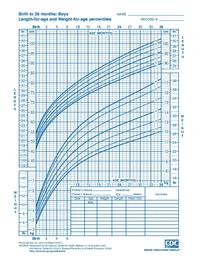
Photo from wikipedia
OBJECTIVE A simple, rapid, and specific method has been developed and validated to measure sulbactam in human plasma using high-performance liquid chromatography-tandem mass spectrometry (HPLC-MS/MS). MATERIALS AND METHODS The pharmacokinetic… Click to show full abstract
OBJECTIVE A simple, rapid, and specific method has been developed and validated to measure sulbactam in human plasma using high-performance liquid chromatography-tandem mass spectrometry (HPLC-MS/MS). MATERIALS AND METHODS The pharmacokinetic characteristics of sulbactam in critically ill patients with augmented renal clearance were investigated after the repeated administration of cefoperazone-sulbactam (3 g, q8, IV drip, combination ratio of 2 : 1). Sulbactam plasma concentration was determined using LC-MS/MS with tazobactam used as an internal standard (IS). RESULTS The method was fully validated with a sensitivity of 0.20 μg/mL, the linear concentration was ranged from 0.20 to 30.0 μg/mL. The intra-batch precision (RSD%) was less than 4.9%, and the accuracy deviation (RE%) ranged from -9.9 to 1.0%; the inter-batch precision (RSD%) was less than 6.2%, and the accuracy deviation (RE%) ranged from -9.2% to 3.7%. The value of the mean matrix factor at the low and high quality control (QC) concentration was 96.8 and 101.0%, respectively. The extraction recovery for QCL and QCH of sulbactam were 92.5 and 87.5%, respectively. Plasma samples and clinical data were collected at 0 (pre dose), 0.25, 0.5, 1, 2, 3, 6, and 8 hours (post dose) from 11 critically ill patients. Pharmacokinetic parameters were determined by non-compartmental analysis (NCA) using Phoenix WinNonlin software. CONCLUSION This method was successfully applied to study the pharmacokinetics of sulbactam for critically ill patients. The main pharmacokinetic parameters of sulbactam in augmented renal function and normal renal function groups were summarized as follows: half-life, 1.45 ± 0.66 and 1.72 ± 0.58 hours, area under the concentration-time curve from 0 to 8 hours, 59.1 ± 20.1 and 111.4 ± 23.2 μg × h/mL, drug plasma clearance at steady state, 18.9 ± 7.5 and 9.32 ± 2 .03 L/h, respectively. These results suggested that a higher dose of sulbactam should be used in critically ill patients with augmented renal clearance.
Journal Title: International journal of clinical pharmacology and therapeutics
Year Published: 2023
Link to full text (if available)
Share on Social Media: Sign Up to like & get
recommendations!